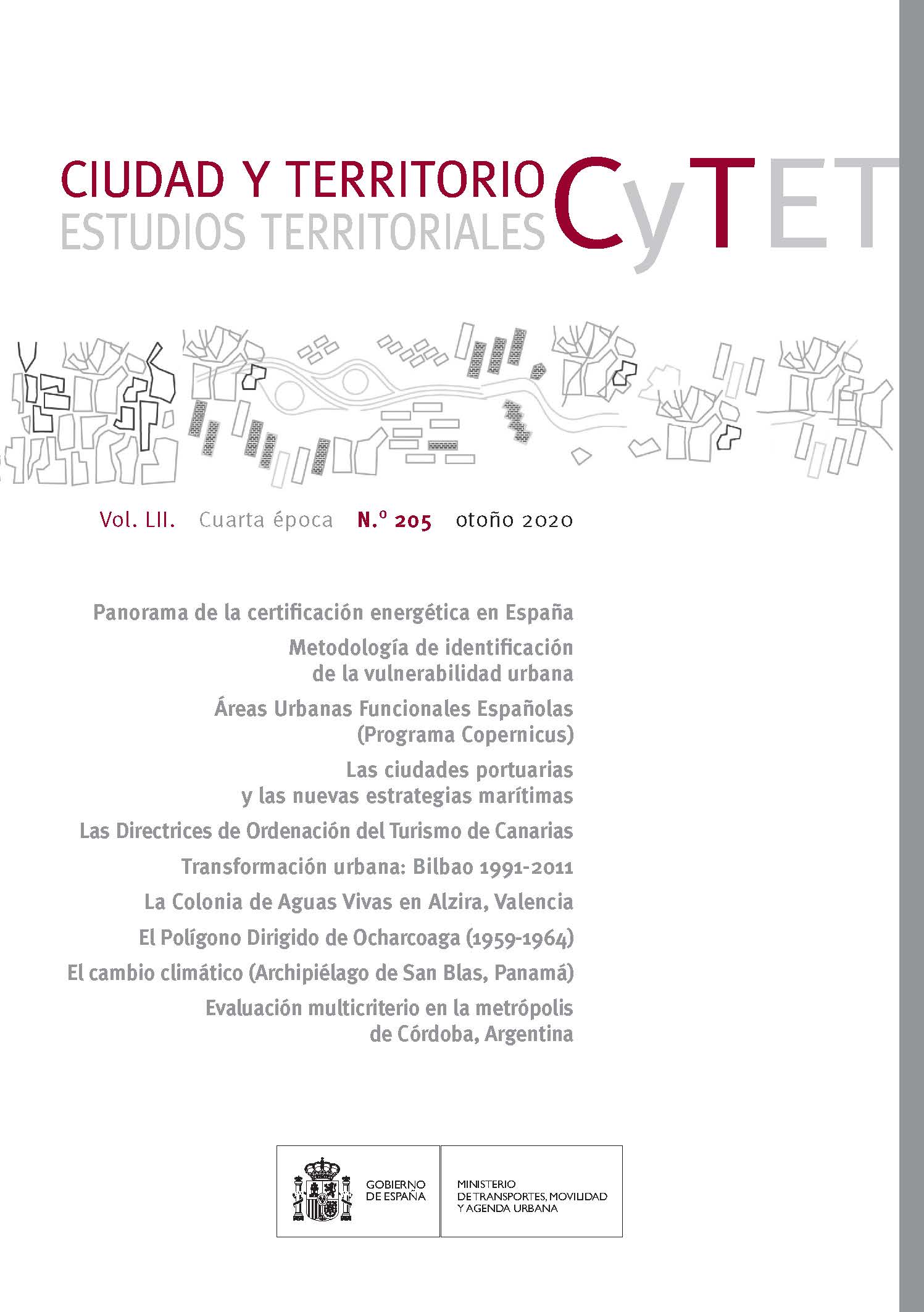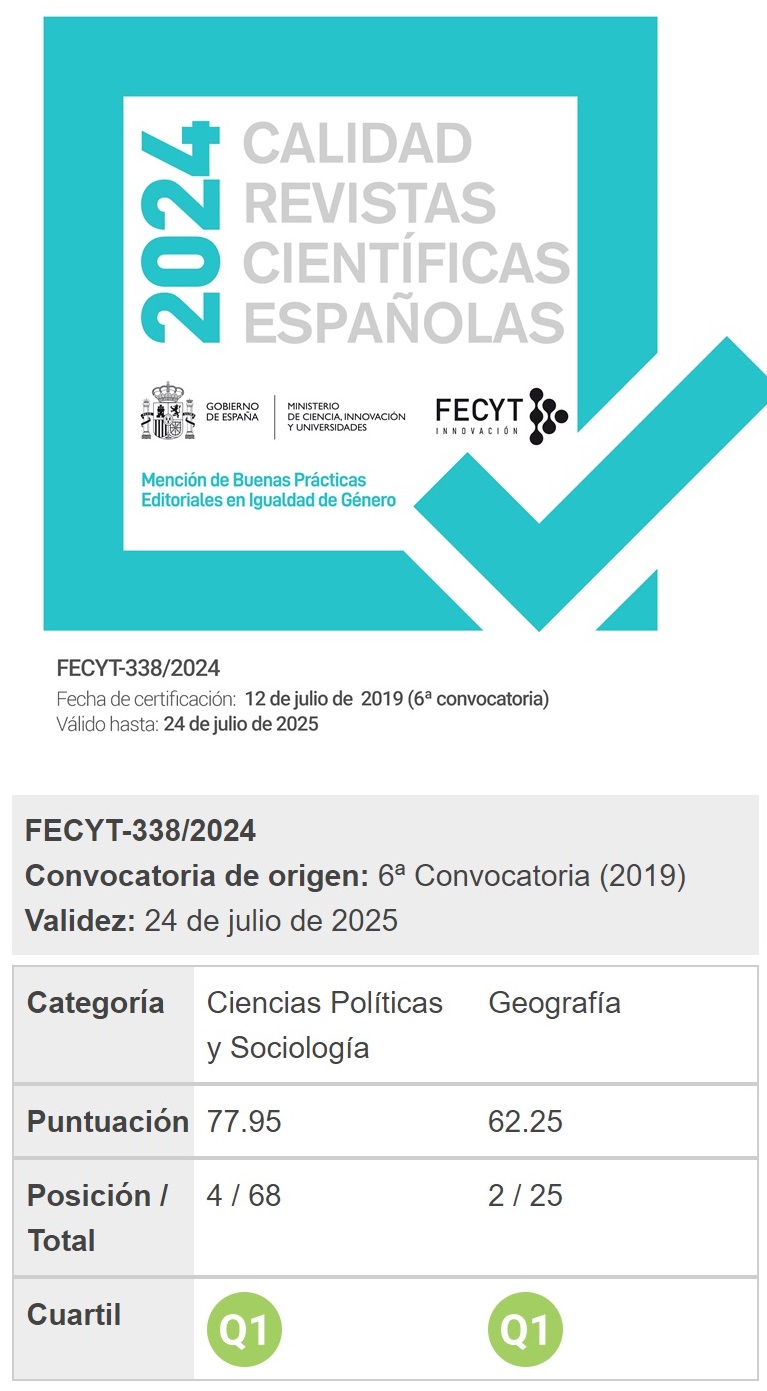Los instrumentos de Planeamiento Urbanístico en España: estudio comparado (I)
DOI:
https://doi.org/10.37230/CyTET.2020.205.11Palabras clave:
Ordenación territorial y urbanística; Instrumentos de planificación urbana; Planes Generales; Desarrollo sostenibleResumen
La Nueva Agenda Urbana de Naciones Unidas aprobada en Hábitat III, en 2016, considera que “la reactivación de la planificación y el diseño urbano y territorial integrado y a largo plazo […]”, son elementos claves del nuevo paradigma urbano a nivel mundial. La larga tradición del sistema urbanístico español y la extensa y completa regulación que las leyes autonómicas hacen sobre los instrumentos de planeamiento, sugieren que España se encuentra en una situación aventajada en la materia, no obstante, como refleja el diagnóstico de la Agenda Urbana Española (AUE), la realidad es bien distinta y nos presenta unos planes rígidos y excesivamente complejos. Este Estudio comparado, -que se divide en dos partes-, quiere profundizar en ese diagnóstico, ofrecer evidencias precisas sobre la situación del planeamiento, y resaltar algunos de los cambios e innovaciones que se empiezan a intuir en una legislación urbanística que es, a la vez, heterogénea en lo formal y continuista en lo material. Para ello, en esta primera parte se identifica el marco básico estatal con incidencia en la normativa sobre el planeamiento, se estudia la clasificación de los instrumentos en todas las Comunidades Autónomas y se analizan las figuras de planeamiento general y su contenido. La segunda parte se centrará en el proceso de tramitación de los planes y en su documentación
Descargas
Publicado
Cómo citar
Número
Sección
Licencia
Derechos de autor 2020 Sonia Hernández-Partal

Esta obra está bajo una licencia internacional Creative Commons Atribución-NoComercial 4.0.
Sin perjuicio de lo dispuesto en la legislación vigente sobre Propiedad Intelectual, y conforme a la misma, el/la los/las autor/a/es/as que publiquen en CyTET cede/n a título gratuito, de modo no exclusivo y sin límite temporal al Ministerio de Transportes, Movilidad y Agenda Urbana los derechos para difundir, reproducir, comunicar y distribuir en cualquier formato actual o futuro, en papel o electrónico, la versión original o derivada de su obra bajo licencia de Creative Commons Reconocimiento-NoComercial-SinObraDerivada 4.0 Internacional (CC BY-NC-ND 4.0), así como para incluir o ceder a terceros la inclusión de su contenido en índices, repositorios y bases de datos nacionales e internacionales, con referencia y reconocimiento en todo caso de la autoría del mismo.
Además, al realizar el envío, el/la los/las autor/a/es/as declara/n que se trata de un trabajo original en el que se reconocen las fuentes que han sido utilizadas en su estudio, comprometiéndose a respetar la evidencia científica y a no modificar los datos originales para verificar o refutar una hipótesis de partida; que el contenido esencial del mismo no ha sido publicado previamente ni se publicará en ninguna otra obra o revista mientras esté en proceso de evaluación en la revista CyTET; y que no se ha remitido simultáneamente a otra publicación.
Los autores deben firmar un Formulario de Cesión de Derechos, que les será enviado desde la Secretaría de CyTET una vez se acepte su artículo para ser publicado.
Con el objetivo de favorecer la difusión del conocimiento, CyTET se adhiere al movimiento de revistas de Open Access (OA) y entrega la totalidad de sus contenidos a diversos índices, repositorios y bases de datos nacionales e internacionales bajo este protocolo; por tanto, la remisión de un trabajo para ser publicado en la revista presupone la aceptación explícita por parte del autor/a de este método de distribución.
Se anima a las/os autoras/es a reproducir y alojar sus trabajos publicados en CyTET en repositorios institucionales, páginas web, etc. con la intención de contribuir a la mejora de la transferencia del conocimiento y de la citación de dichos trabajos.








 Enlace a CyTET en Linkedin
Enlace a CyTET en Linkedin